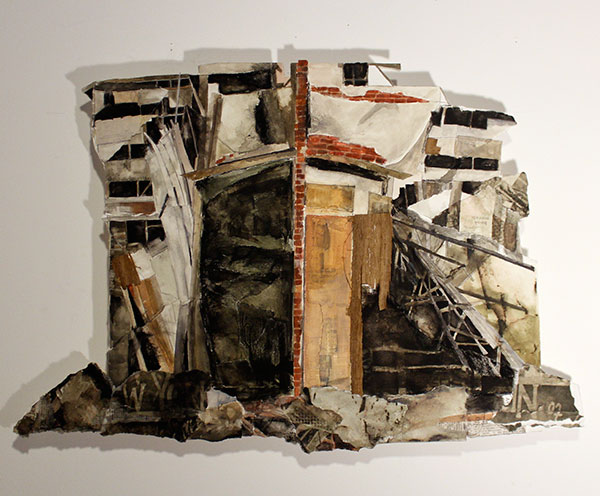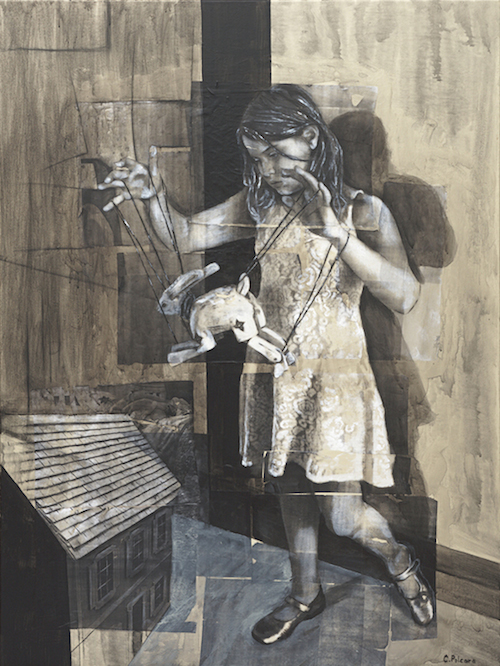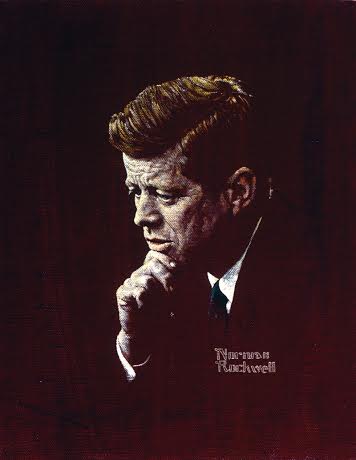“Without having to miss out on fun, just outsource your test to us, an expert will take it and you will get the awesome grade that you deserve. All at prices you will not believe. How does that sound?”
—Excerpt from one of many results of googling “take my test”
This pitch is more than incredibly crass. It is really just outright pimping of hired poseurs to online students willing to “pay for performance.” With the massive growth of online education, such parasitic companies have sprung up like weeds, presenting a serious threat to program integrity.
In a famous 1993 New Yorker cartoon, a dog at a computer quipped, “On the Internet, nobody knows you’re a dog.” We are still haunted by concerns about whether remote learning can ever be conducted fairly. Of course, the Internet didn’t invent dishonesty. For years, students have been reporting anonymously having cheated and plagiarized – more than 70 percent in most studies. The public believes, along with many faculty, that cheating is easier to do, and likely even more common, in online courses than on campus. While many online leaders agree, they do not see cheating as a major challenge or barrier to program success.
What’s harder – and even more important – than deterring and detecting cheating in online education? Certainly designing interesting course formats that catch and hold the attention of students halfway around the world through all hours of day and night. Distractions abound, and the convenience of asynchronous learning makes it all the more tempting to put off work until the last minute (thus making the siren’s call from cheating companies doubly tempting). Distance creates the illusion of anonymity. Behavioral ethicists have long noted that context matters: In situations where dishonesty is easy to conduct and rationalize, we are far more prone to caving in to temptation.
Thus, designing effective assessments is a critical part of the task of creating distance-learning programs of high integrity. An online program cannot claim to be truly worthy of academic recognition without strong assurance that students are being fairly and effectively assessed in their learning.
Student honesty is a prerequisite for the credibility of online programs. That made it worthwhile for us to better understand its nature. To that end, we designed a survey to learn more about what was being done about cheating in online programs, and how technology itself is being used in solutions. The results were interesting, even somewhat surprising.
Who is actually participating in my course?
From both the survey results and our direct conversations with online program leaders, a frequently stated concern is the lack of face-to-face contact with students. Aside from the concern about cheating, faculty and students miss the experience of direct involvement with one another. One instructor commented, “We feel a professional obligation to know who our students are, and the degree to which they are engaged in our courses, whether or not there is cause for concern about cheating.”
Academic sentimentality aside, what about ringers—can we be certain that the student doing the work is actually the one registered in the course? The federal government weighed in on this, requiring in the Higher Education Opportunity Act of 2008 that online programs must have stronger procedures to ensure this than just the use of usernames and passwords, which can be too easily shared.
This is where a legitimate industry has emerged: commercial “test proctoring.” For many years, there have been commercial bricks-and-mortar “testing centers” (Pearson and Prometric centers being the most prevalent) where individuals needing professional certification complete exams under the scrutiny of professional proctors. Customers verify their identities using government photo IDs, drivers’ licenses, passports, etc., before sitting for proctored tests. Online programs began using these centers or otherwise requiring online students to come onto campus to take exams. While commercial testing centers can be expensive, the real cost was in student travel time and inconvenience.
The changing landscape
In the rise of online education with its flexible features (learning anytime, anywhere), entrepreneurs saw an opportunity to provide less expensive, more convenient means of student authentication and test proctoring. An early and still-dominant approach is to use a computer’s webcam and the Internet to enable trained human proctors either to monitor students’ test-taking in real time or to review video recordings of the test session after the fact. In either case, the proctors look for evidence of cheating as well as authenticating the test-taker (typically by comparing the image of the test-taker seen by the webcam with a previously recorded image from the student’s photo ID). Major vendors include ProctorU, Examity and Software Secure.
More recently, a new generation of vendors has introduced fully automated systems making use of “recognition” technologies (facial, voice, fingerprint biometrics, even typing styles) to achieve the same results at considerably lower cost, due primarily to the absence of the human factor. These fully automated solutions are generally more convenient, as there is no need to schedule a proctor, and more scalable as human labor is replaced by algorithms. They typically establish a biometric profile when the student initially enrolls, and then use the computer’s webcam, microphone or keyboard to authenticate (via biometric comparison) the student at later times.
These technologies are also capable of identifying behaviors suggestive of cheating, typically reporting these to course instructors on convenient dashboards, along with the relevant evidence from video recording or screen captures made during the test. Current such vendors include Verificient (ProctorTrack), ProctorFree, Proctorio and BIOMIDS.
Where it all stands now: the survey
In order to reach a broad audience of online leaders, this survey was executed in different ways, through emails and blog links, during its fielding period from January 2015 to May 2015. Participants fromUPCEA and WCET member institutions were asked to give indications, ranging from strong disagreement to strong agreement with statements in six general areas of online education. From the strong participation, including thoughtful responses to open-ended questions, it was clear that the online programs in these membership organizations are under strong, engaged leadership with high ambitions for growth in size and quality. The matters of integrity, cost and convenience to students are of great interest and concern, and programs leaders are open and committed to emerging solutions.
We saw strong appreciation for the challenges of student dishonesty and program integrity, with clear confidence that the problems are manageable. Eight-four percent of the 141 respondents concurred that student dishonesty is a significant issue. Half of all who responded believed that the public thinks dishonesty is more likely to occur in distance learning. But 79 percent did not see this as a difficult barrier, as effective solutions are available.
By far the most frequently cited means of ensuring program integrity, specifically the deterrence of cheating, was reliance on honor codes or clearly articulated institutional policies. Three-quarters of these online leaders felt that establishing, articulating and enforcing such policies provided the essential foundation for online integrity, if not fully satisfactory solutions.
Slightly less than half of the 141 respondents currently use test proctoring, and an additional quarter are considering it. Our impression is, however, that even among users, actual use is erratic and infrequent (such as only for final examinations or other high-stakes assessments). In its formats, the field itself seems not yet to have progressed much beyond the video stage, either as real-time monitoring via webcam or by record and review. We noted that over two-thirds of the respondents indicated being open to considering the newer fully automated solutions for student authentication and test proctoring.
Almost half of those surveyed thought that the major concerns about cheating involved browsing or otherwise using unauthorized notes or other sources during tests. 38 percent thought having another person pose as the student during a test was problematic, and 42 percent were concerned about those who consult others for help during an examination.
When asked to name the most desirable features in a remote proctoring system, a large majority–not surprisingly–cited simplicity and ease of use, a high degree of integrity and reliability and low cost. Cost is a particularly vexing problem, as the addition of an authentication or proctoring system represents an added expense, either to the institution or individually to students. News media recently reported strong objections from students surprised by new requirements to pay outside vendors to proctor their tests.
Our impression is that low cost, automated solutions funded by institutions are far preferable to having students pay separate test-proctoring fees.
The most interesting results speak to the distinction between video-monitoring and newer fully automated solutions. More than half of the respondents rated as “very desirable” or “desirable” the features of freedom from having to schedule live proctors, student authentication via intelligent software that persists throughout the session and fully automated proctoring with results summarized for the instructor immediately following the test.
Relatively less desirable features included remote monitoring by live proctors who could intervene during a test, automation running locally on the student’s computer, and video-recording for post-test review by live proctors. Anecdotal information gained from direct conversations with online students shows a much greater comfort level with automated (i.e., biometric, AI) proctoring than with having another live person monitoring their test-taking remotely.
In short, instructors, students, and administrators want solutions that are neither distractions nor intrusions–that simply address the concerns effectively, at low cost and without compromising the focus on teaching, learning and assessment.
The future
The roles and nature of online authentication and proctoring continue to evolve. Leaders in online education appreciate the very real concerns about student honesty and want to provide effective, affordable solutions that are respectful of all concerns. The costs are not only financial, but also matters of time, convenience, integrity and preservation of educational priorities. We see an increasing demand by accreditors and public officials for greater accountability for ensuring the identity, active participation and demonstrated achievement by students in online programs. There is also important concern about fraud in programs whose students are eligible for federal financial aid. Recent auditshave revealed huge amounts of federal financial aid awarded to students registered for online courses in which they never actually participated.
Fortunately, there is growing awareness of the tools available for addressing these issues—especially as we evolve from human to automated authentication and proctoring. Greater use of these tools, however, will require the attributes of lower cost, ease of use and demonstrated integrity of the proposed solutions. We see the further development of fully automated systems as a powerful next-generation response, becoming a ubiquitous, nearly transparent part of remote authentication and proctoring.
To achieve this, we will need to help students–even more in online courses than on-campus–to understand that the integrity of their academic credits, certificates and degrees might very well depend on automated measures to confirm their participation and ensure the validity of their assessment. We are not so much replacing Mr. Chips’ personal touch with Big Brother’s remote scrutiny—as ensuring a level playing field for all students, and demonstrating our respect and responsibility for their certified achievements.
Dennis Berkey is the former president of Worcester Polytechnic Institute and former provost of Boston University and is currently the president of BIOMIDS Inc. Jay Halfond is a former dean and currently a professor of the practice at Boston University. The authors thank UPCEA’s Center for Research and Marketing Strategy and WCET for invaluable help in conducting this research. For further information on this study, contact Mr. Berkey at dennis.berkey@biomids.com.
This piece originated on the Web site of the New England Board of Higher Education (nebhe.org).












